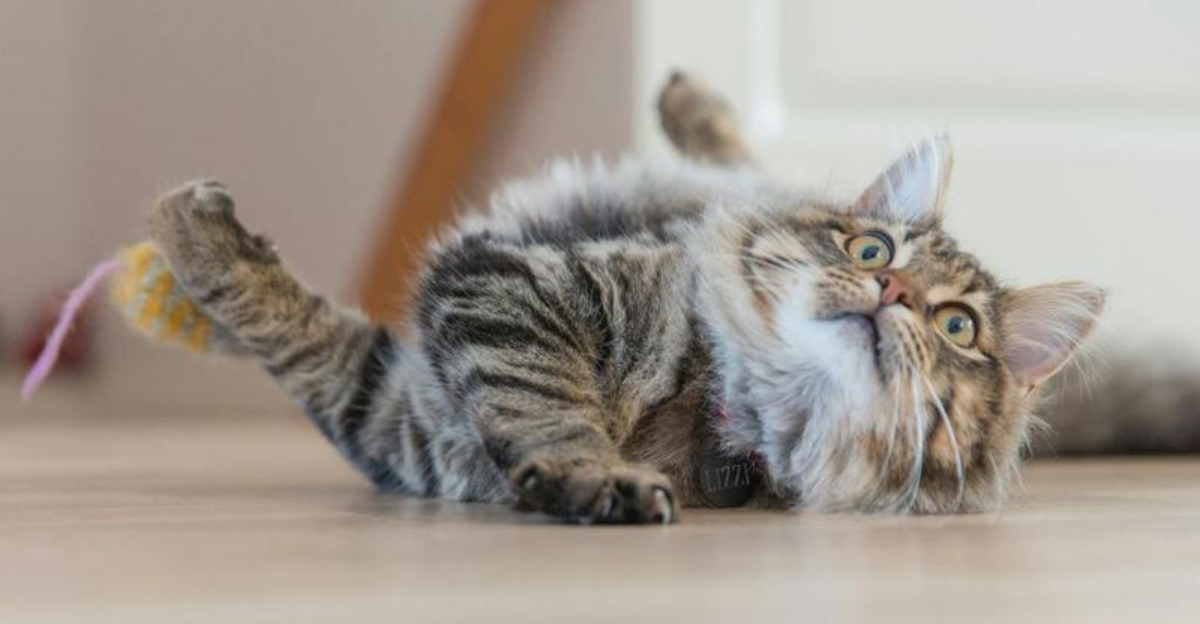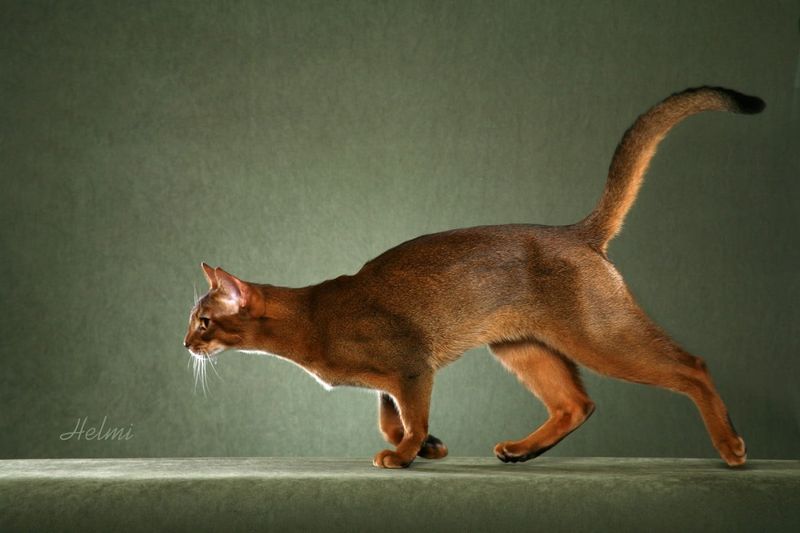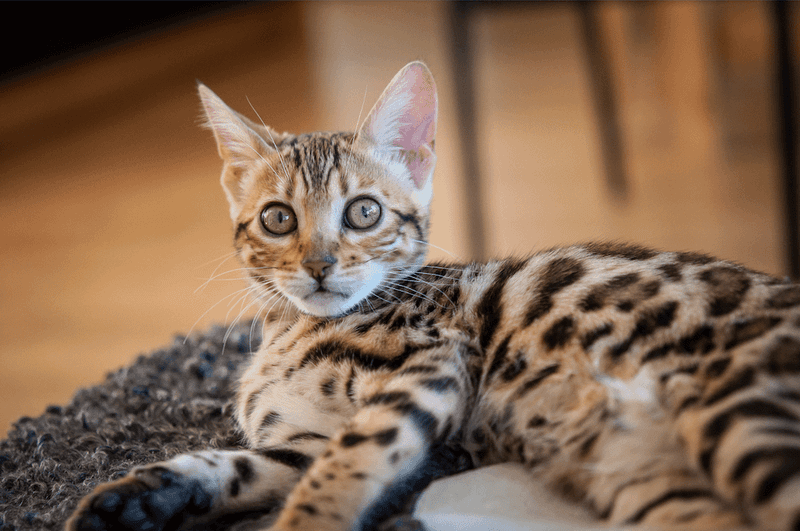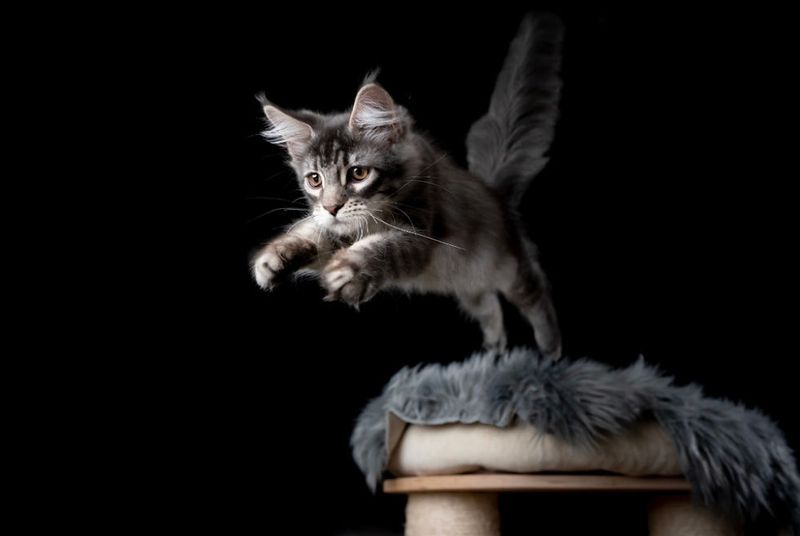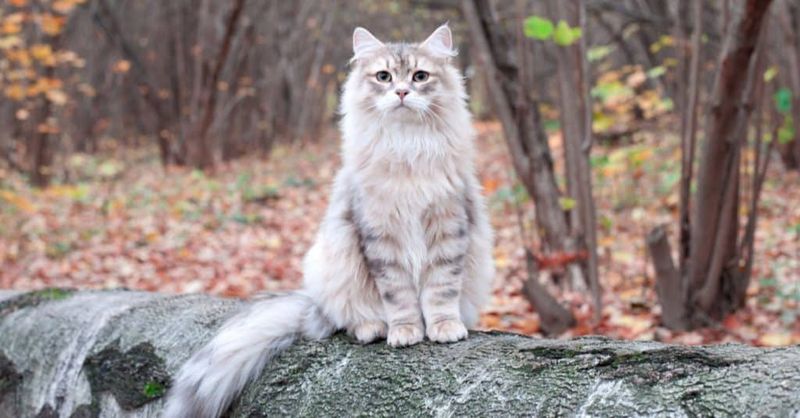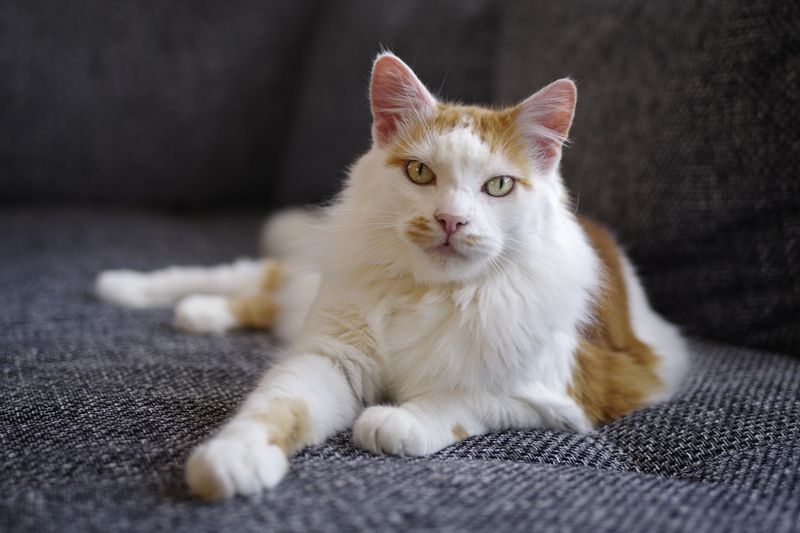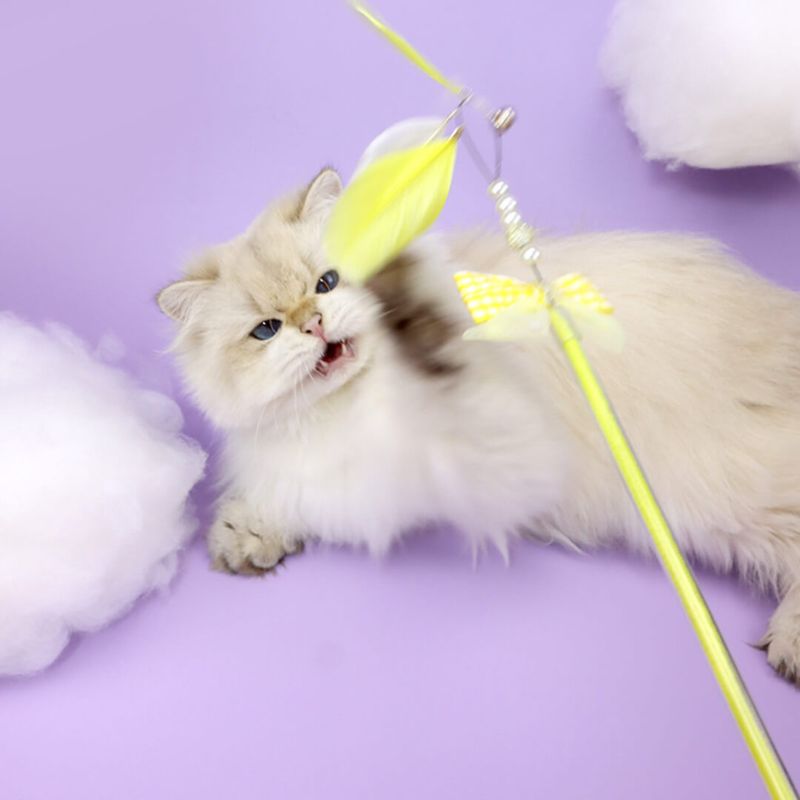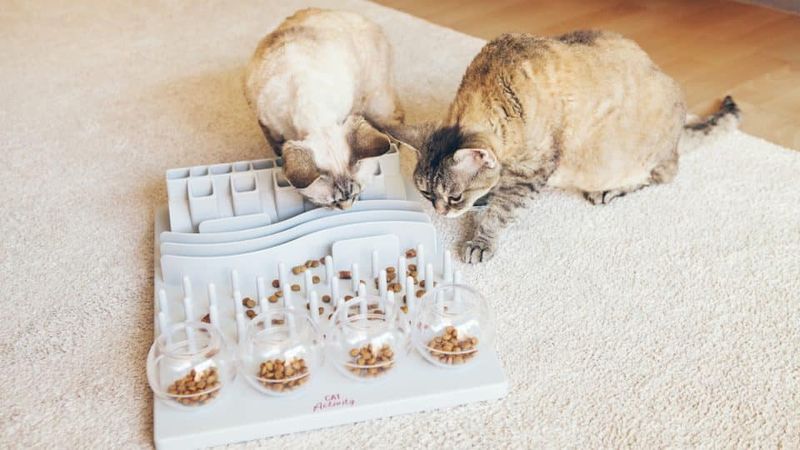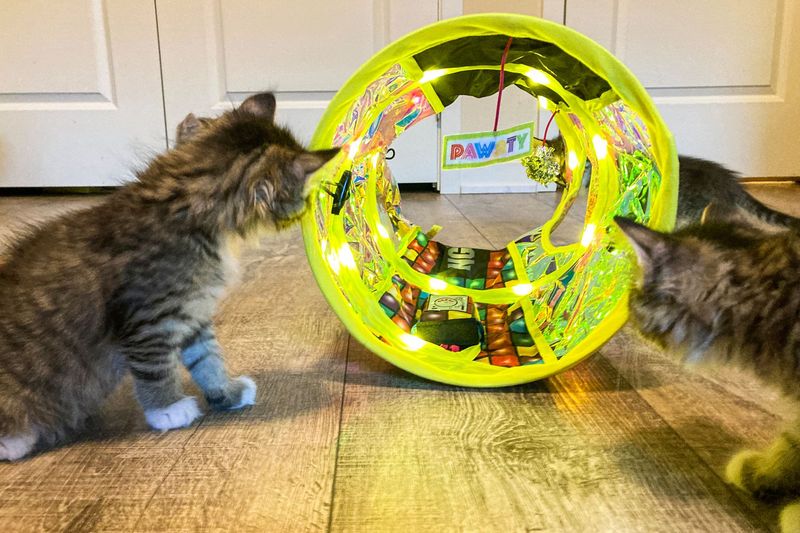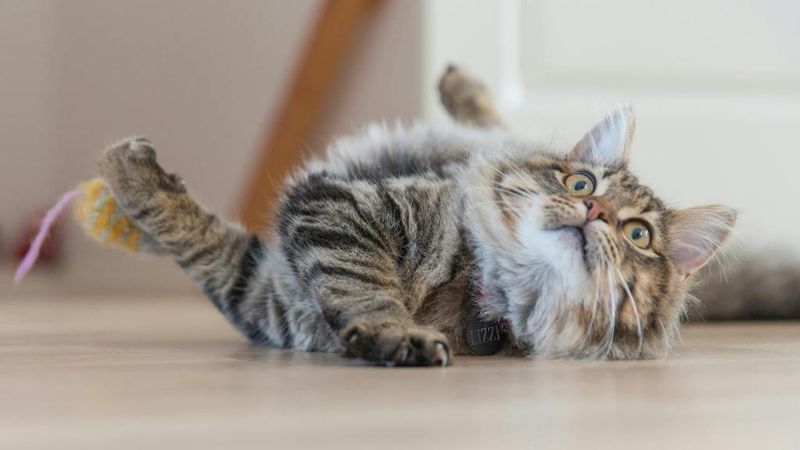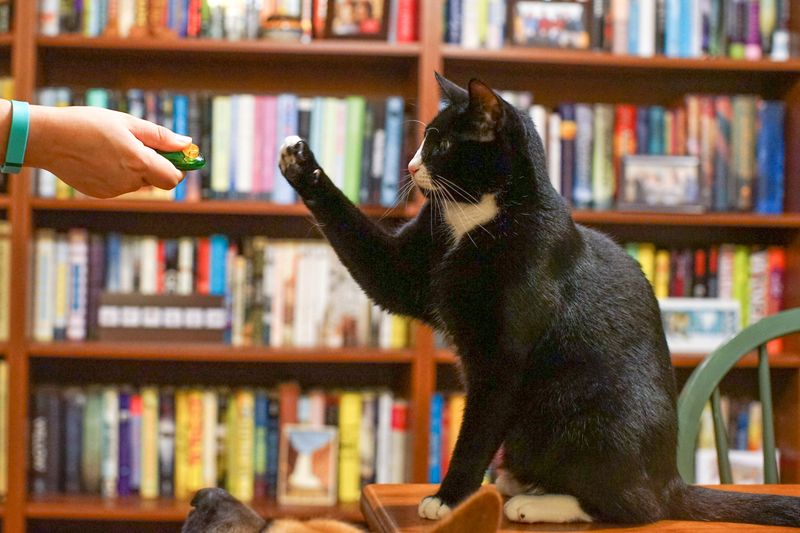📖 Table of Content:
- 1. Abyssinian Cats: Born Hunters with Ancient Roots
- 2. Bengal Cats: Wild Ancestry with Predatory Precision
- 3. Maine Coon Cats: Gentle Giants with Killer Instincts
- 4. Siberian Cats: Forest Hunters with Weather-Resistant Coats
- 5. Turkish Van Cats: Aquatic Hunters with Remarkable Agility
- 1. Interactive Toys: Awakening Your Cat’s Predatory Instincts
- 2. Food Puzzles: Turning Mealtime into Hunt Time
- 3. Toy Rotation: Keeping the Hunt Fresh and Exciting
- 4. Scheduled Hunt Sessions: Creating a Predatory Routine
- 5. Clicker Training: Rewarding Your Cat’s Inner Hunter
Whether your cat lounges like royalty or pounces at shadows, there’s a deeply embedded instinct within every feline: the drive to hunt. Some breeds, however, are more in tune with their ancestral nature, showcasing an impressive blend of athleticism, intelligence, and stealth. These cats don’t just chase toys—they stalk them, plan their moves, and leap with the kind of grace you’d expect from their wild cousins.
While not all domestic cats share the same level of energy or instinct, it’s entirely possible to awaken the inner predator in even the laziest feline. In fact, engaging a cat’s hunting instincts can reduce anxiety, boost physical health, and strengthen your bond. The trick lies in understanding both the natural abilities of certain breeds and the creative ways to inspire those abilities in any household cat.
By combining knowledge of the most hunt-driven cat breeds with actionable enrichment techniques, you can create a more stimulating, joyful environment for your feline companion. Below, we’ll highlight five cat breeds that excel at the hunt, and follow it with five playful strategies to motivate your own feline—no matter how nap-prone they may be.
1. Abyssinian Cats: Born Hunters with Ancient Roots
Abyssinians showcase hunting prowess that matches their ancient lineage, tracing back to Egyptian times. Their slender, muscular bodies allow them to sprint, leap, and pounce with incredible precision – movements that would make any mouse tremble! These tawny felines possess an insatiable curiosity that drives them to investigate every corner of their territory. Unlike more sedentary breeds, Abyssinians rarely tire of the chase. Their alert ears constantly swivel toward potential prey sounds, while their keen eyes track the slightest movements. Many Abyssinian owners report finding their cats perched in high places, patiently waiting to ambush toys or unsuspecting bugs. Their hunting style combines calculated patience with explosive action, making them fascinating to watch and challenging to outsmart during playtime.
2. Bengal Cats: Wild Ancestry with Predatory Precision
Sporting spectacular spotted coats that mirror their wild Asian leopard cat ancestors, Bengals carry hunting genes that run deep. These muscular felines combine lightning-fast reflexes with remarkable intelligence, creating the perfect predatory package that’s hard to match in the domestic cat world. Water holds no fear for these unique hunters. Many Bengals happily fish with their paws or even swim to catch prey – behavior rarely seen in other house cats. Their powerful hind legs launch them to impressive heights, while their sharp eyes track moving targets with computer-like precision. Bengals require substantial physical and mental stimulation to satisfy their hunting drive. Without proper outlets, they’ll create their own adventures – reorganizing shelves, opening cabinets, or turning household items into prey substitutes with remarkable creativity.
3. Maine Coon Cats: Gentle Giants with Killer Instincts
Don’t let their sweet personalities fool you – Maine Coons were working cats bred specifically for their mousing abilities in harsh New England winters. Despite their massive size (some reaching 25 pounds!), these gentle giants move with surprising stealth when stalking prey. Their tufted ears catch the faintest sounds, while their bushy tails provide perfect balance for tricky hunting maneuvers. Originally farm cats, Maine Coons developed specialized hunting techniques for different environments – from barn rafters to snowy fields. What makes Maine Coons particularly effective hunters is their patience. They’ll watch a target area for hours, barely moving a whisker. Their large paws, often with extra toes (polydactylism), act like snowshoes in winter and give them exceptional dexterity for catching elusive prey in any season.
4. Siberian Cats: Forest Hunters with Weather-Resistant Coats
Hailing from Russia’s harsh taiga forests, Siberians evolved as supreme hunters in one of Earth’s most challenging environments. Their triple-layered, water-resistant coats allowed them to hunt successfully through brutal winters while their powerful builds made them formidable predators against even larger prey. Unlike many domestic cats, Siberians developed a unique problem-solving intelligence necessary for survival. They analyze hunting grounds methodically, often using unexpected angles of approach. Their exceptionally strong hind legs enable them to jump nearly six feet vertically from a standstill – perfect for catching birds or climbing trees. Siberians possess another hunting advantage: surprising stealth despite their size. Their dense fur includes special toe tufts that muffle footsteps on any surface. When focused on potential prey, these normally vocal cats become completely silent, channeling their wild forest ancestors.
5. Turkish Van Cats: Aquatic Hunters with Remarkable Agility
Known as the ‘swimming cats,’ Turkish Vans bring a completely different approach to hunting. Native to Lake Van in Turkey, these cats developed a bizarre trait for felines – they actually enjoy swimming and hunting in water! Their unique water-resistant cashmere-like coats dry quickly after aquatic adventures. Turkish Vans combine explosive energy with tactical hunting approaches. They often use height to their advantage, climbing to elevated positions before launching surprise attacks. Their muscular bodies enable them to change direction mid-air, making them nearly impossible for prey to evade. Most fascinating is their problem-solving ability when hunting. Turkish Vans have been observed dropping toys into water deliberately, then fishing them out – mimicking natural hunting behaviors. Their heterochromia (different-colored eyes) isn’t just beautiful; some believe it helps them track movement better in varying light conditions.
1. Interactive Toys: Awakening Your Cat’s Predatory Instincts
Nothing transforms a lazy lounger into a fierce hunter faster than toys that mimic natural prey movements. Feather wands with erratic, bird-like movements trigger instinctual responses even in the most sedentary cats. The key lies in mimicking authentic prey behavior – mice don’t move in straight lines, and neither should your cat’s toys! Laser pointers create the perfect hunting scenario by mimicking the unpredictable darting of insects or small animals. Just remember to finish these sessions with a physical toy your cat can actually “catch” to prevent frustration. Electronic toys that move independently provide hunting stimulation even when you’re busy. The most effective interactive toys incorporate multiple senses – sound, movement, and even smell. Many toys now contain catnip or silver vine to increase interest through scent. For maximum engagement, keep sessions short (10-15 minutes) but intensely active.
2. Food Puzzles: Turning Mealtime into Hunt Time
Cats who yawn at conventional toys often transform into dedicated hunters when food enters the equation. Food puzzles tap into the primal connection between hunting and eating that exists in every cat’s brain. The mental stimulation combined with physical activity creates a powerful motivational cocktail! Start with simple puzzles where your cat can see the food, then gradually increase difficulty. Rolling treat balls that dispense kibble when batted around simulate the chase-and-reward cycle of natural hunting. For advanced feline foragers, multi-compartment puzzles require strategic paw movements to unlock hidden treats. Beyond commercial options, homemade puzzles work brilliantly. A muffin tin with treats hidden under toy balls or toilet paper tubes with folded ends containing kibble provide budget-friendly hunting experiences. The key is varying the challenge to prevent your cat from getting bored once they master a particular puzzle.
3. Toy Rotation: Keeping the Hunt Fresh and Exciting
“Where did this come from?!” That’s exactly what you want your cat thinking when you implement a toy rotation system. Cats quickly habituate to toys left out constantly, but those same toys become mysteriously exciting again after disappearing for a week or two. The element of novelty triggers hunting responses in even the laziest cats. Create three separate toy collections and rotate them weekly. Store unused toys in sealed containers with a pinch of catnip to refresh their scent appeal. When reintroducing a collection, scatter toys in unexpected locations around your home – behind doors, under furniture edges, or atop cat trees. Mix toy types within each collection for maximum hunting stimulation: some that roll, others that flutter, and a few that make subtle noises. The varied movements activate different hunting responses. For supreme effectiveness, personally interact with newly rotated toys during the first “hunting session.”
4. Scheduled Hunt Sessions: Creating a Predatory Routine
Wild cats don’t hunt randomly – they follow biological rhythms tied to prey activity. Domesticated cats retain these instinctual timing patterns, with peak hunting drives occurring at dawn and dusk. Scheduling daily hunt sessions during these natural hunting windows dramatically increases participation from otherwise lazy cats. Morning sessions should focus on explosive movement toys that satisfy the urgent hunting energy cats feel after sleep. Evening sessions work best with slower-paced, stalking-type activities that allow for the calculated hunting behaviors cats naturally employ as daylight fades. Consistency creates powerful associations. Using a specific word or sound before each session conditions your cat to prepare mentally for hunting. Many cats who initially show minimal interest become enthusiastically engaged after just two weeks of regular sessions. The biological programming is there – scheduled sessions simply activate what already exists.
5. Clicker Training: Rewarding Your Cat’s Inner Hunter
Clicker training might seem like dog territory, but it works brilliantly for awakening hunting behaviors in cats. The method creates clear communication: click the instant your cat performs any hunting behavior (stalking, pouncing, chasing), then immediately reward. The precise timing helps your cat connect specific movements with positive outcomes. Start with naturally occurring behaviors. When your cat spontaneously stalks something, click and treat. Soon, you’ll notice increased hunting behaviors as your cat realizes these actions bring rewards. For particularly lazy cats, begin by rewarding even minimal movement toward a toy. Advanced clicker training can shape impressive hunting sequences. Many cats learn to run obstacle courses chasing toys or perform spectacular leaps on command. Beyond the hunting benefits, clicker training strengthens your bond while providing mental stimulation that many indoor cats desperately need.
